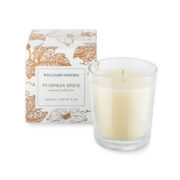Celebrating Fresh Fruit and Vegetables in Botanical Illustration

© Aislinn Adams Plum Tomatoes
Botanical illustrations to celebrate fresh fruit and vegetables.
June has arrived -though you wouldn’t know it here in the Pacific North West with the record rainfall we are having- and with it our first CSA (Community Supported Agriculture) vegetable box. This weekly vegetable box comes from an organic farm 30 miles south of Salem, Oregon. I look forward to its arrival every June. It’s hard to beat fresh, locally grown produce for flavor.
Our first vegetable box of the summer.
There are only a handful of vegetable and fruit illustrations amongst the hundreds of botanical illustrations I created for the “Digging In” gardening column of the Washington Post but the arrival of the first summer vegetable box in our home inspires me to blog about them.
Plum tomatoes.
I start with an illustration of plum tomatoes, though there are no tomatoes in our vegetable box yet. I particularly like plum tomatoes because of their rich flavor and, even though they are grown primarily for sauces and paste, I love to eat them raw.
The first tomatoes in Europe.
It’s hard to believe that when tomatoes first arrived in Europe around 1523, from Central and South America, they were viewed with suspicion. Their strong odor and brightly colored fruit appeared poisonous to Europeans, especially as the only other solanum species then known in Europe had poisonous fruit.
Tomatoes and the Italians.
The earliest record of the fruit is by the Italian botanist Matthiolus who described the yellow-fruited variety, in 1544. That is why tomatoes are called pomodoro in Italian today. The Italians were also the first Europeans brave enough to eat them. Maybe that is why tomatoes feature so prominently in their cuisine.
Remembering Scilla, a small coastal town in southern Italy.
As I write about tomatoes I think of my first trip to Italy over 30 years ago. Winding my way by train down Italy’s boot was my first real travel adventure. I was with some friends, fellow art students traveling on a shoestring. I felt the season drawing to a close and time running out. I needed to turn north soon, back to Ireland and college. One late summer’s evening we arrived in the small coastal town of Scilla: 22 kilometers north of Reggio. We only had a couple of nights to spend there but I remember them well.
Scilla’s student hostel was a 13th century castle perched high on the rocky promontory that overlooks the old town and small, shingled beach below. To this day it remains the most dramatic and picturesque hostel-or hotel for that matter- I’ve ever stayed in.
Barrels of tomato sauce.
That first evening we wandered through the narrow, paved alleyways of the old town. Outside every house stood large oil barrels perched on short, homemade legs, fires lit underneath. The barrels were full to the brim with simmering tomatoes, bubbling and spitting. The winter supply of tomato sauce was being made. On windowsills glass bottles of every shape and size stood waiting to be filled with the thick, red sauce.
Recycling glass bottles!
Whenever I make tomato sauce I remember Scilla and those glass bottles. Somehow the plastic bags I use to freeze my own sauce don’t have quite the same aesthetic appeal. I look forward to my own crop of tomatoes this August. Maybe this year I’ll reuse some of my own glass bottles.
Aislinn Adams




Aislinn, I love the illustration and learning some tomato history. Also, your recollection of the trip in Scilla, Italy. How great to have that memory. You do a great job with your blog.
Thanks Bonnie, I’m discovering that the more I write the more memories come back to me. Is it possibly a sign of age??